|
Cucumber salad with dill and sour cream just screams summer and Scandinavia. So when I planned my Scandinavian Midsummer Porch Party, I knew it had to be included. Agurksalat is the Norwegian name of cucumber salad, but funnily enough, most cucumber "salads" in Scandinavia are more like quick cucumber pickles - thinly sliced cucumbers are covered with a brine of vinegar, salt, and sugar, with fresh dill. This salad is often used to accompany fish, or as a topping for rye bread and liver pate. But where I was growing up in the Red River Valley of North Dakota, cucumber salad was made with sour cream. I wonder if these salads weren't invented to use up the bumper crops of cucumbers that often result. Certainly in Scandinavia they were historically celebrated as a herald of spring, and were eaten only for the short months they were available in outdoor gardens, mostly June and July. In the US, especially the Upper Midwest, the cucumbers are often peeled, but I'm a big fan of English/burpless/seedless/Persian cucumbers, which are thinner skinned, less bitter, and more crisp than their larger counterparts. These cucumbers are perfect for salads as they're crisp enough to hold up under dressings but tender enough to taste more like garden-grown. I am not particularly a fan of the sweet-sour brine (which seems to also be used to pickle herring!), and dislike bread and butter pickles for this reason, so my cucumber salad recipe doesn't include any sugar. This last-minute addition ended up being one of the surprise smash hits of the afternoon, and I sent the little bit that was left home with a friend and her kids, who kept going back for seconds. Scandinavian Cucumber SaladIf you want a more traditional salad, google "agurksalat," but if you want something traditionally Midwestern Scandinavian-American, and surprisingly refreshing on a hot day, stay with me. 6 mini Persian cucumbers, or 1 large English cucumber 1 teaspoon salt 2 scallions white wine vinegar full fat sour cream Wash and thinly slice the cucumber - not paper-thin, but thinner than a quarter inch. Add salt to the bowl and toss the cucumber slices to coat. Let rest for 15 minutes, then drain off the juice. If you're avoiding salt, feel free to give them a little rinse and drain again. Slice the scallions paper-thin, and add to the cucumbers with a splash of vinegar and a dollop of sour cream. Toss everything together until the cucumbers are coated with the vinegar-sour cream mixture. Serve cold or cool. The cucumbers will be salty and crisp and the creamy-sour dressing will be very addictive. Great as an accompaniment to sandwiches, grilled fish or meats, or as one of a variety of cold salads served for a light supper. The Food Historian blog is supported by patrons on Patreon! Patrons help keep blog posts like this one free and available to the public. Join us for awesome members-only content like free digitized cookbooks from my personal collection, e-newsletter, and even snail mail from time to time! Don't like Patreon? Leave a tip!
0 Comments
Last year I wrote about North Dakota Caramel Rolls, which have dominated the state in recent years. But funnily enough, although they are less popular now, orange rolls were equally if not more popular when I was growing up. And I found many more references to them in my historic cookbooks. Orange rolls in the upper Midwest (mainly Eastern North Dakota, where I grew up, and Minnesota) were popular Sunday brunch staples, although they competed about even with caramel rolls in my neck of the woods. Of course, the kind I grew up with were not made from scratch, but rather the frozen kind made by the Rhodes frozen bread company. They came with a delightful orange cream cheese frosting. But despite being a brunch staple of my Midwestern childhood, I didn't know much about these, and I wanted to try a historic recipe for a brunch of my own. The origins of orange rolls and their popularity in the Midwest is, like many things, a bit cloudy. If you search for "history orange rolls" today, you'll likely get a LOT of hits about ALABAMA orange rolls (scroll to the bottom for the links), but nary a one about the Midwestern kind. Truth be told they don't look like they differ much. A sweet roll dough with orange zest and sugar rolled up like a cinnamon roll and topped with an orange glaze. So why did both Alabama and the Upper Midwest develop a love of orange rolls? Oranges aren't grown in either region. Enter the 1910s and '20s orange craze. In the 1870s California orange agriculture exploded, and oranges - once an imported wintertime treat - became increasingly available year-round. "Orange fever" struck Florida around the same time, until a big freeze in 1894 and again in 1895 set the industry back on its heels. In the 1920s the industry got a boost from the Florida real estate boom. Cooperatives like the California Orange Growers Exchange began to market nationally using clever advertising techniques. "Sunkist" - a playful spelling of "sun-kissed" - became synonymous with the California Orange Growers co-op, and later became their official name. The earliest recipe for what resembled orange rolls comes from Sunkist Recipes, Oranges - Lemons, published by the California Citrus Growers Exchange in 1916. "Orange Pinwheels" are essentially baking powder biscuits, rolled thin, spread with butter and sugar mixed with orange juice and zest, then rolled up and sliced, with more sugar sprinkled on top. The Sunkist biscuit-style recipe survives, with or without attribution, in other cookbooks throughout the 1920s and '30s. Often, the biscuit "rolls" are called "orange rolls," not "pinwheels," which makes the research a bit confusing! The earliest recipe I could find for yeasted orange rolls comes from Mrs. Allen's Cook Book by one of my favorite cookbook authors, Ida Bailey Allen, published in 1917. But even these aren't quite the same as what I was looking for. Mrs. Allen's "Orange Rolls (5 Hours)" are not actually rolled up rolls - they're more like buns flavored with orange juice and candied orange peel, and then glazed with more orange peel. Thankfully, Frances Lowe Smith has our back with her More Recipes for Fifty, published in 1918 and containing several wartime-friendly recipes, including this one for "Orange Rolls," which are to be prepared using a yeasted dough and spread with butter and sugar mixed with orange juice and grated rind and then "rolled like cinnamon rolls." The first North Dakota reference I could find is for the biscuit-y kind of orange rolls, in a 1930s North Dakota Agricultural Extension circular. But looking through my cookbook library for vintage midwestern cookbooks, I also found tons of references to orange rolls! Largely from the 1930s and '40s (which is when most of my North Dakota and Minnesota cookbooks date to). I decided to go with this recipe, because it looked fairly easy and definitely quick. No getting up five hours before brunch for these beauties (sorry, Mrs. Allen). Taken from Receiptfully Yours, a community cookbook published by the Ladies' Guild of the Zion Lutheran Church of Duluth, MN, the recipe turned out very nicely! Although Receiptfully Yours, is undated, I'm guessing it dates from the 1940s, judging by the type and the style of binding. Both the Cinnamon Roll recipe and Orange Roll variation were submitted by Ethel Mathison. I love that they used full names, instead of "Mrs. Husband's Name!" Midwestern Orange Rolls RecipeLike many orange rolls recipes, this one starts as a recipe for cinnamon rolls, with orange rolls listed as a variation. Interestingly, instead of having an orange glaze or cream cheese frosting, this recipe is listed much like caramel rolls! With a butter-sugar-orange-juice mixture cooked in the bottom of the pan. Here is my slight modernization of the recipe: - - For the dough - - 1/2 cup scalded milk 3 tablespoons butter 3 tablespoons sugar 1 1/2 teaspoons salt 1/2 cup cold water 1 envelope quick-rising yeast 1 egg 3 1/4 cups flour - - For the filling and glaze - - 3/4 cup sugar 2 tablespoons grated orange zest 2 tablespoons melted butter 3 tablespoons orange juice Preheat the oven to 375 F. Mix milk, butter, sugar, and salt in a saucepan and heat over medium heat until the butter is just melted. Cool by adding cold water, then add the yeast and egg and beat well. Then add flour and mix until smooth, kneading several times. The dough will be soft. Let the dough rest 15 minutes. Roll the dough out on a floured board (or clean countertop) into a 12" by 18" rectangle. Mix 1/4 cup sugar and 1 tablespoon zest and spread on the dough, then roll as for cinnamon rolls and cut crosswise into 1 inch slices. In a 9"x13" pan, mix 1/2 cup sugar, 2 tablespoons melted butter, 1 tablespoon orange rind, and 3 tablespoons orange juice, then top with the cut dough pieces. Let rise until doubled, then bake for 20 minutes or until golden brown. Flip to serve. These turned out beautifully, although very sweet! I used some very sweet heirloom navel oranges in the recipe, and something with a little more acidity might have been better. When I make them again, I might take a page from some of the other recipes and moisten the sugar for rolling with a little orange juice, and pick some more sour oranges. I may also bake them a smidge longer. Of course, I may also decide to try my hand at some of the other recipes, too! These rolls are perfect for a weekend brunch, bridal or baby shower, or afternoon treat. Have you ever had orange rolls? How do you take yours? Alabama Orange Rolls History LinksAnd now, as promised, a taste of the rabbit hole I went down in researching this post. The Alabama orange rolls may be more internet famous than the Midwestern ones, but it looks like they laid their claim to fame a bit later - in the 1960s and '70s, to be precise. Read on for more of the back story. The delectable history behind Birmingham’s famous Orange Rolls Why the Alabama Orange Roll is a Southern Classic - Southern Living The sweet story of Millie Ray and her famous orange rolls The Food Historian blog is supported by patrons on Patreon! Patrons help keep blog posts like this one free and available to the public. Join us for awesome members-only content like free digitized cookbooks from my personal collection, e-newsletter, and even snail mail from time to time! Don't like Patreon? Leave a tip! Last week I went home to North Dakota for Mom's funeral. The service ended up being lovely, with a huge turnout, and so nice to see extended family and old friends. Reminders of her were everywhere, of course, but while her garden was starting to come up, including the special fern peonies she rescued from her grandmother's garden, nothing was really blooming yet. But the rhubarb on the south side of the house was already going gangbusters. About a month ago, right after Mom died, my sister and I were going through some of the books she had out, including cookbooks. Sister found a copy of the Ritzy Rhubarb Secrets Cookbook: Rhubarb Recipes by the Good Cooks of Litchville, North Dakota and the Surrounding Area, which is much in-demand on the North Dakotan corners of the internet. Edited by Jane Winge and originally published in 1991 and reprinted in 1992, 1993, 2000, and 2002, it's probably the most popular rhubarb cookbook in the Upper Midwest. We both wanted it, but given my already extensive cookbook collection, I said she could have it. Except then we found another copy! Thanks to Mom's thrifting skills, we both got to have one. Which was just a perfect present from her. All of the guests for the funeral were gone by Sunday, leaving just me and Dad. I decided I wanted to make a rhubarb cake for the two of us. We had the most delicious rhubarb bars at the after-service dinner, but they ran out before I could get one! Thankfully a friend had gotten dessert WITH her dinner, and shared. We found out later the young (and very talented) baker thought that people might not like rhubarb, so she didn't make as much of those as the other bars (rommegrot bars - a take on a favorite Norwegian cream porridge). I was like, "Not this crowd!" Rhubarb is very popular around here and those who moved away remember it from childhood. Everyone raved that they were the best rhubarb bars they'd ever had. And while I sadly do not have that recipe (yet, lol), I was feeling cake-ish (as I often do), so searched the Ritzy Rhubarb Secrets Cookbook for a likely candidate. This one immediately struck my fancy. Not only was it the first one listed in the cake section, it also looked easy as pie. "The judges awarded Evy a blue ribbon. They said that selecting the winning cakes was a difficult task as they all looked nice. A traditional flavor was looked for. They liked the crunchy texture and nuts with a good fresh flavor. 'Simple recipes are good.'" How's that for the most North Dakotan review ever? But they're not wrong. This is a simple recipe with good, fresh flavor. No butter to soften and mixes up in a flash. The sour cream provides the fat and moisture in the recipe, and the baking soda reacts with the acidity in the sour cream to create lift, with help from the egg. Rhubarb-Sour Cream Cake RecipeHere's how Evy's original recipe reads: 1 egg 1 cup sugar 1 cup sour cream 1 1/2 cups flour 1 teaspoon baking soda 1/2 teaspoon salt 2 cups rhubarb, cut up Topping: 1/2 brown sugar and as many nuts as you like Beat eggs, sugar, and sour cream together. Add flour, soda, and salt. Mix well. Add rhubarb. Pour into greased and floured 13x9 pan. Sprinkle topping over cake. Bake at 350 for 35-40 minutes. Here's my adaptation, because since Dad doesn't bake, some of the ingredients were a bit lacking. The main one being I substituted nonfat plain Greek yogurt for the full fat dairy sour cream. Still turned out wonderfully, though! 1 egg 1 cup sugar (Mom only had raw sugar) 1 cup nonfat Greek yogurt 1 teaspoon vanilla extract 1 tablespoon vegetable oil (skip if using full fat yogurt or sour cream) 1 1/2 cups flour 1 teaspoon baking soda 1/2 teaspoon salt at least 2 cups chopped rhubarb 1 tablespoon raw sugar 1/4 cup sliced almonds Grease and flour a 9"x13" glass baking dish and preheat the oven to 350 F. Chop fresh rhubarb in advance. If using frozen, thaw and drain. Whisk the egg, sugar, yogurt, vegetable oil, and vanilla together. Add the flour, baking soda, and salt and stir quickly with wooden spoon. Add rhubarb and stir to combine, then pour into greased and floured baking dish and spread evenly. Work quickly as the baking soda will instantly start to react with the acid in the yogurt (probably a big slower with dairy sour cream). Sprinkle with sliced almonds, and then sprinkle sugar on top. Bake at 350 F for 30-40 minutes, or until top is golden brown. This makes a springy, delicious cake that would be good with any type of berry as well. Serve plain or with whipped cream, warm or cold. The rhubarb is not sweetened, so the sugar on top is necessary, along with the full cup of sugar in the batter. If you like your desserts very sweet, toss the rhubarb in sugar to coat before baking. But for me this was just perfect. This cake was so easy it is definitely going in regular rotation. It will probably be a little more tender and moist with real sour cream, or full-fat yogurt, than the nonfat kind, however. But I could see it easily adapting to each fruit harvest as it comes in - rhubarb, strawberries, sour cherries, raspberries, blueberries, peaches, plums, blackberries, etc. And of course, you can always slice and freeze raw rhubarb for wintertime baking. Litchville is a very small town in Barnes County in the Eastern half of the state, and clearly there are lots of rhubarb experts there! The cookbook has approximately 150 pages of recipes, everything from the more traditional like cakes, pies, and preserves, to beverages, breads, and salads. Rhubarb culture is strong in the Upper Midwest, especially North Dakota, because the cold climate makes it difficult to grow most fruits. Rhubarb thrives in cold and neglect. North Dakota's long, cold winters, and cool, wet springs are perfect for rhubarb, which needs a certain number of below-freezing days in the winter to produce. Certainly the rhubarb I planted in New York is doing much less well. According to Ritzy Rhubarb, "Rhubarb is an enigma. Botanically it is a vegetable, but legally it is a fruit. A court ruling in Buffalo, New York, on July 17, 1947, declared it a fruit because its use in the home is similar to that of other fruits." Rhubarb is related to buckwheat, and only the stalk is edible. The leaves contain a toxic amount of oxalic acid (what makes rhubarb sour) and should not be eaten. The stalks, which range in color from pale green to ruby red, are a sour treat after a long winter. Mom and others of her generation remember going out to the garden with a cup of sugar and a paring knife and dipping the raw rhubarb stalks in the sugar to eat. That's a little too sour for me, but a fun childhood memory. I like rhubarb in everything from pie, bars, cakes, breads and jams to more savory applications like mixing rhubarb sauce with garlic and eating it with chicken or pork. Yum. Do you have a favorite way to eat rhubarb? The Food Historian blog is supported by patrons on Patreon! Patrons help keep blog posts like this one free and available to the public. Join us for awesome members-only content like free digitized cookbooks from my personal collection, e-newsletter, and even snail mail from time to time! Don't like Patreon? Leave a tip! |
AuthorSarah Wassberg Johnson has an MA in Public History from the University at Albany and studies early 20th century food history. Archives
July 2024
Categories
All
|

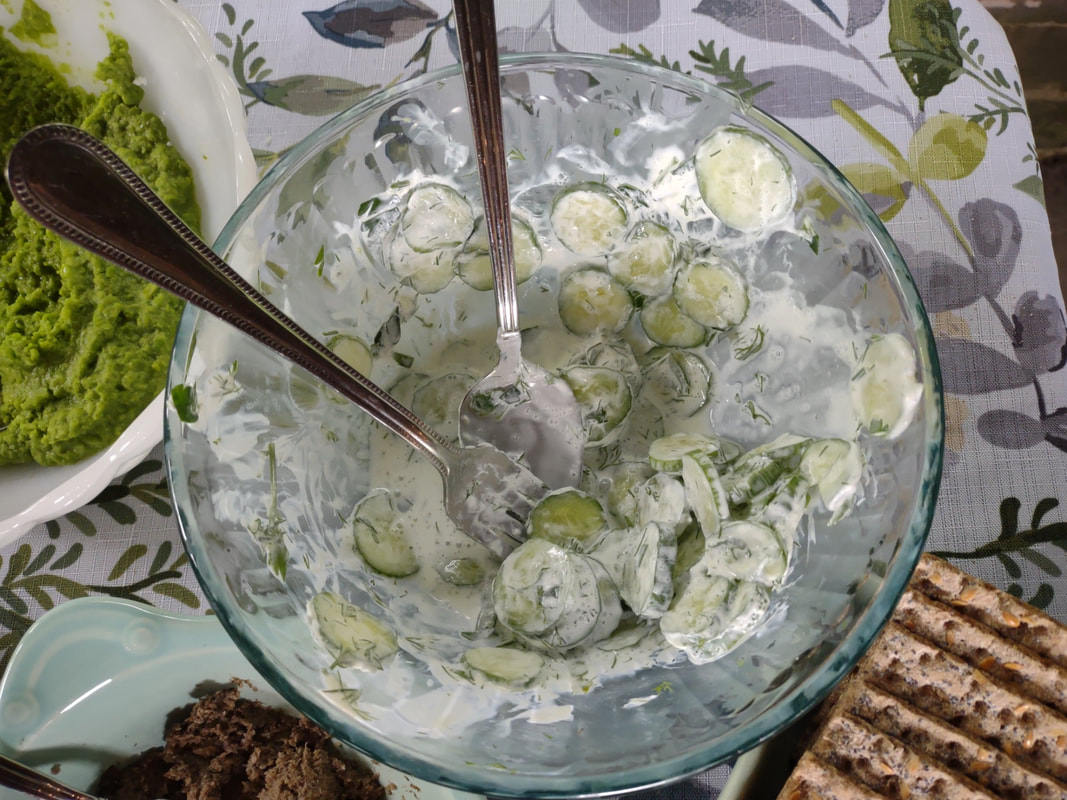





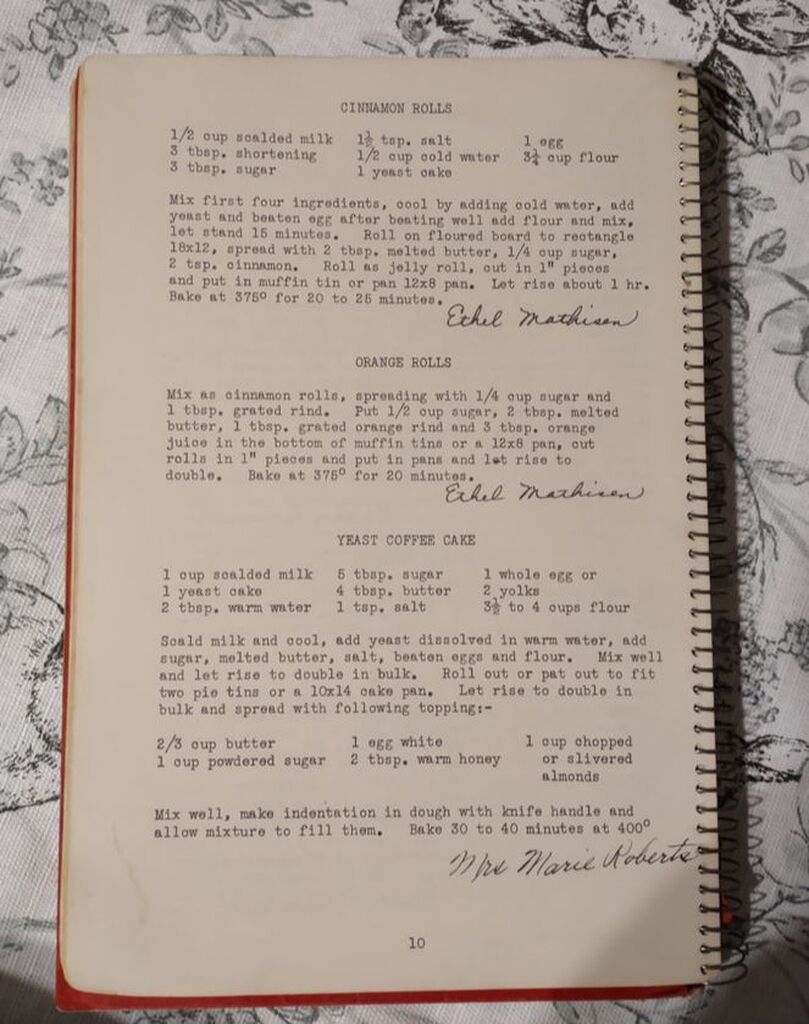


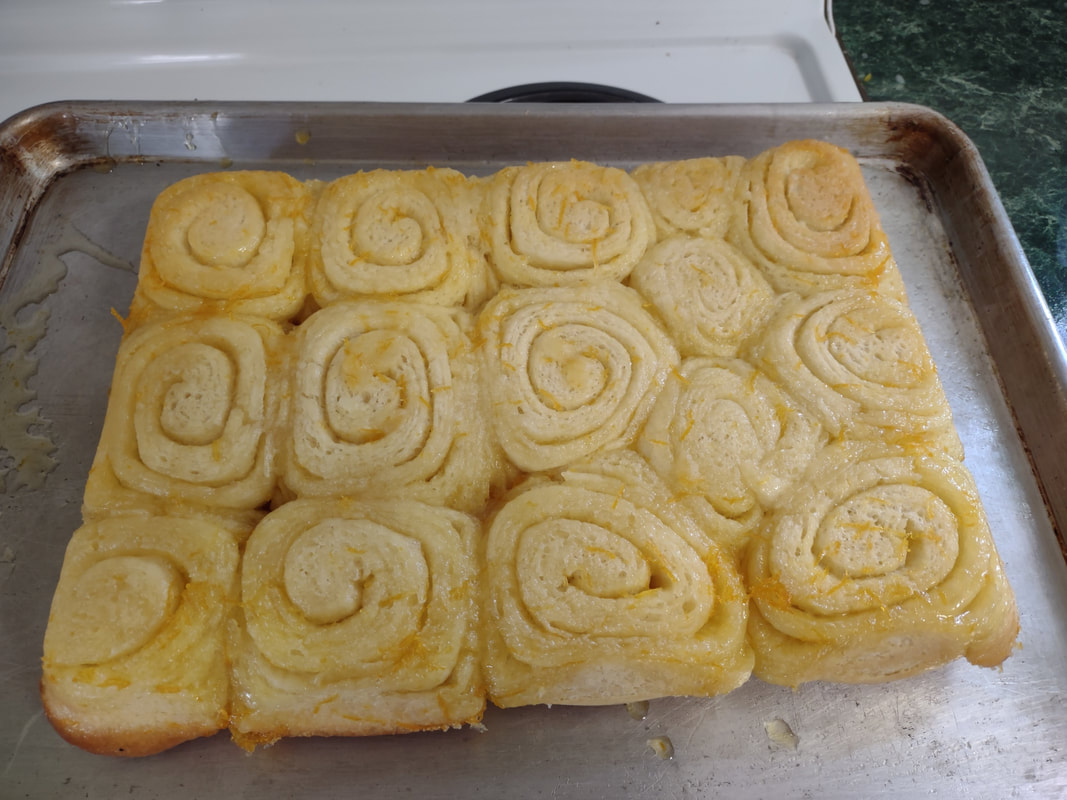

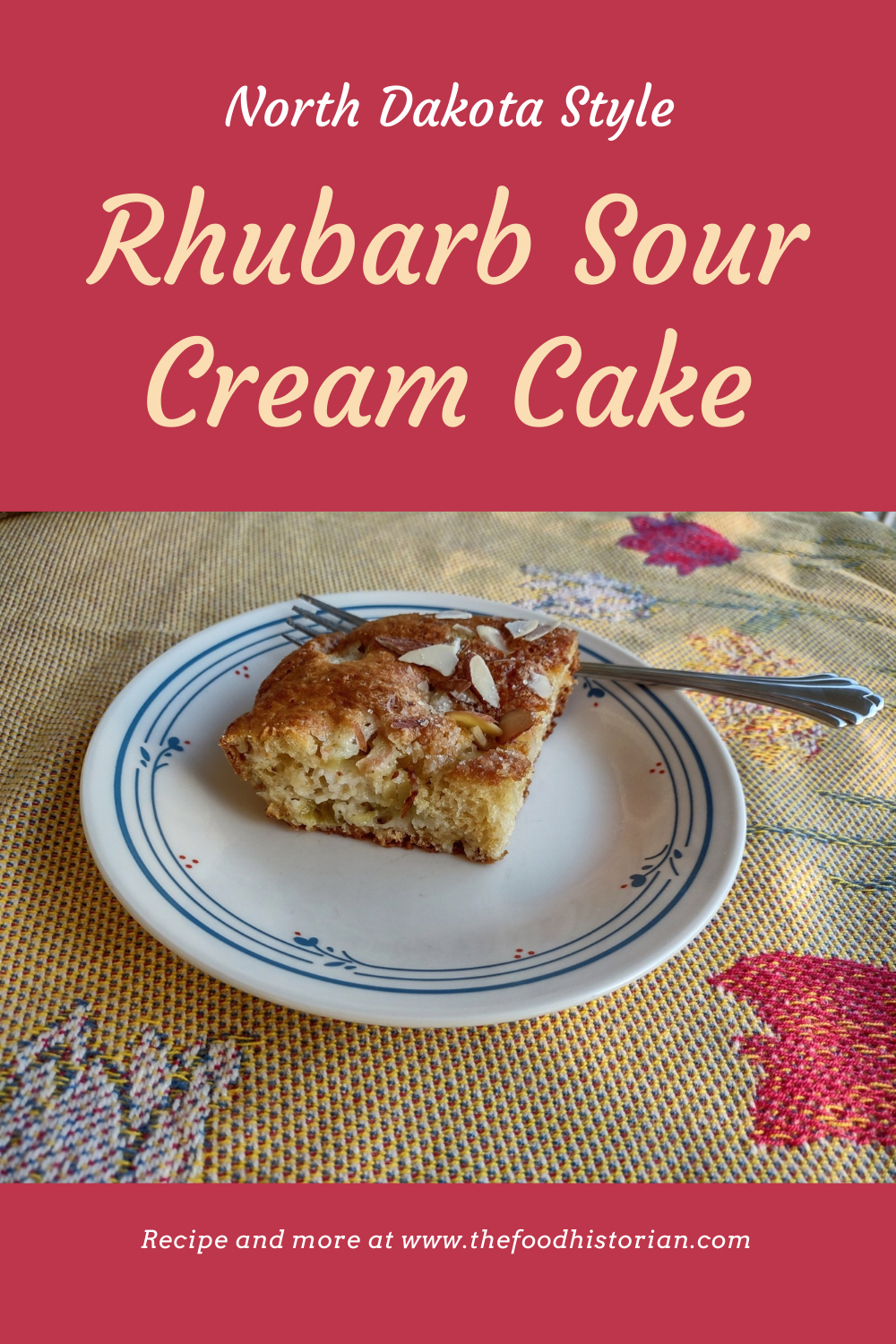
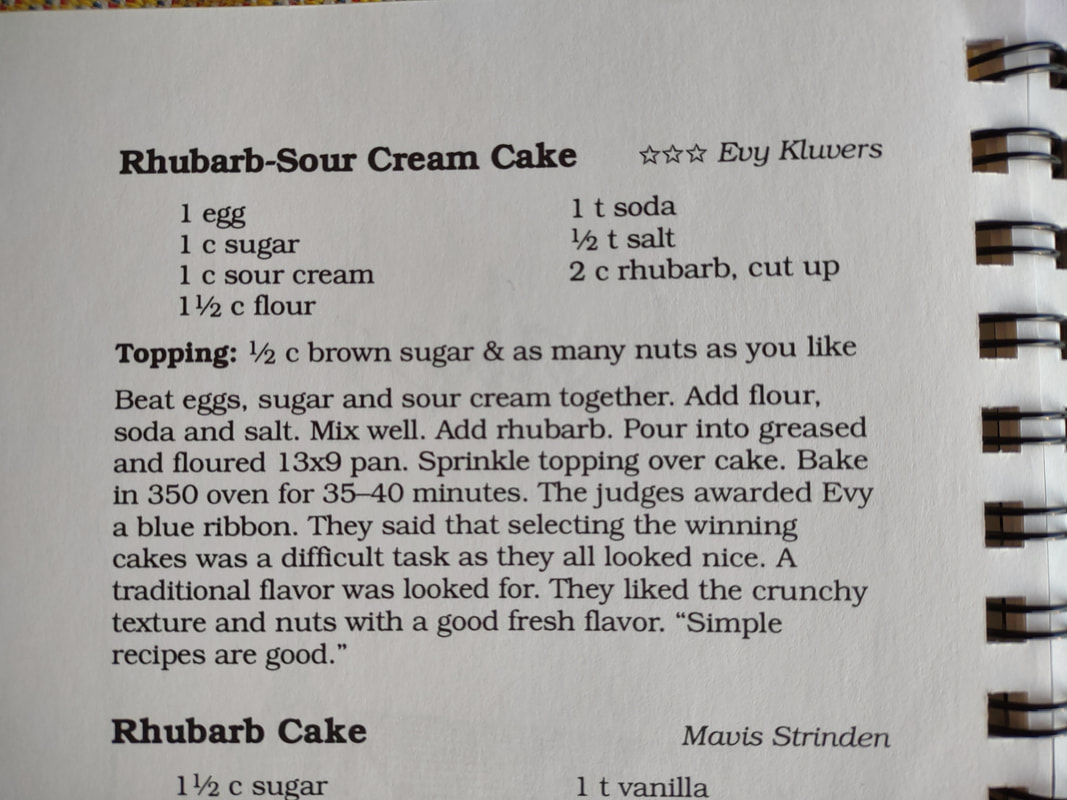

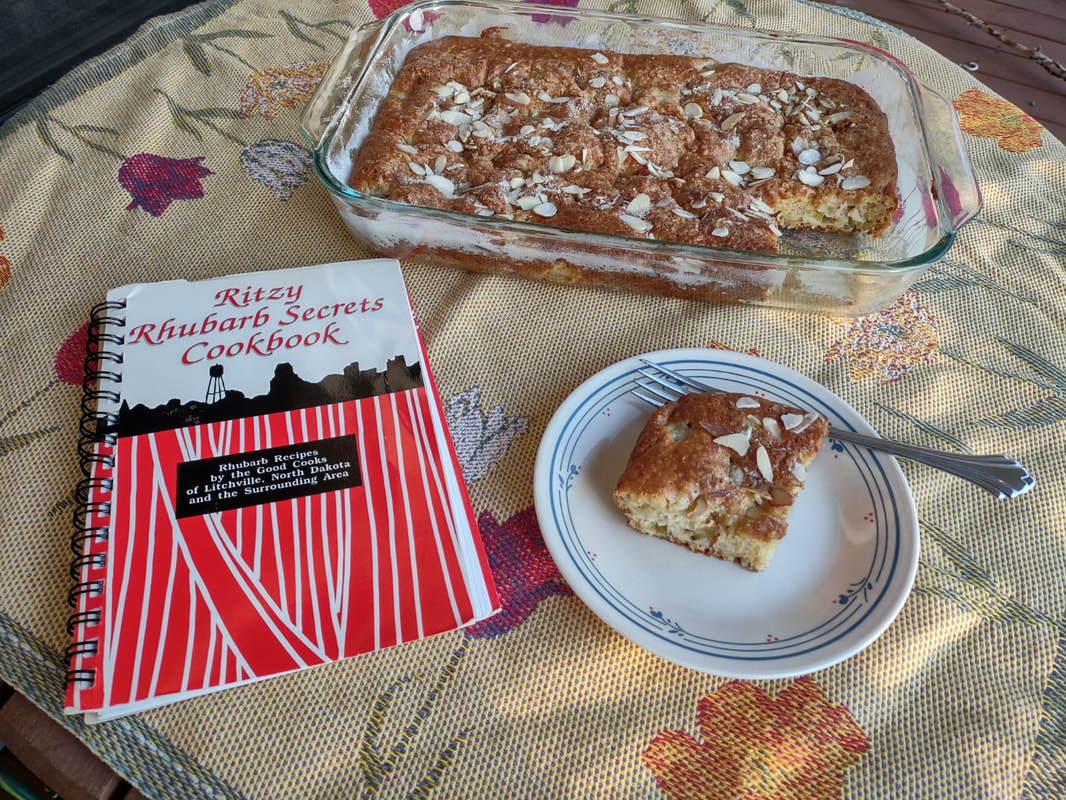

 RSS Feed
RSS Feed